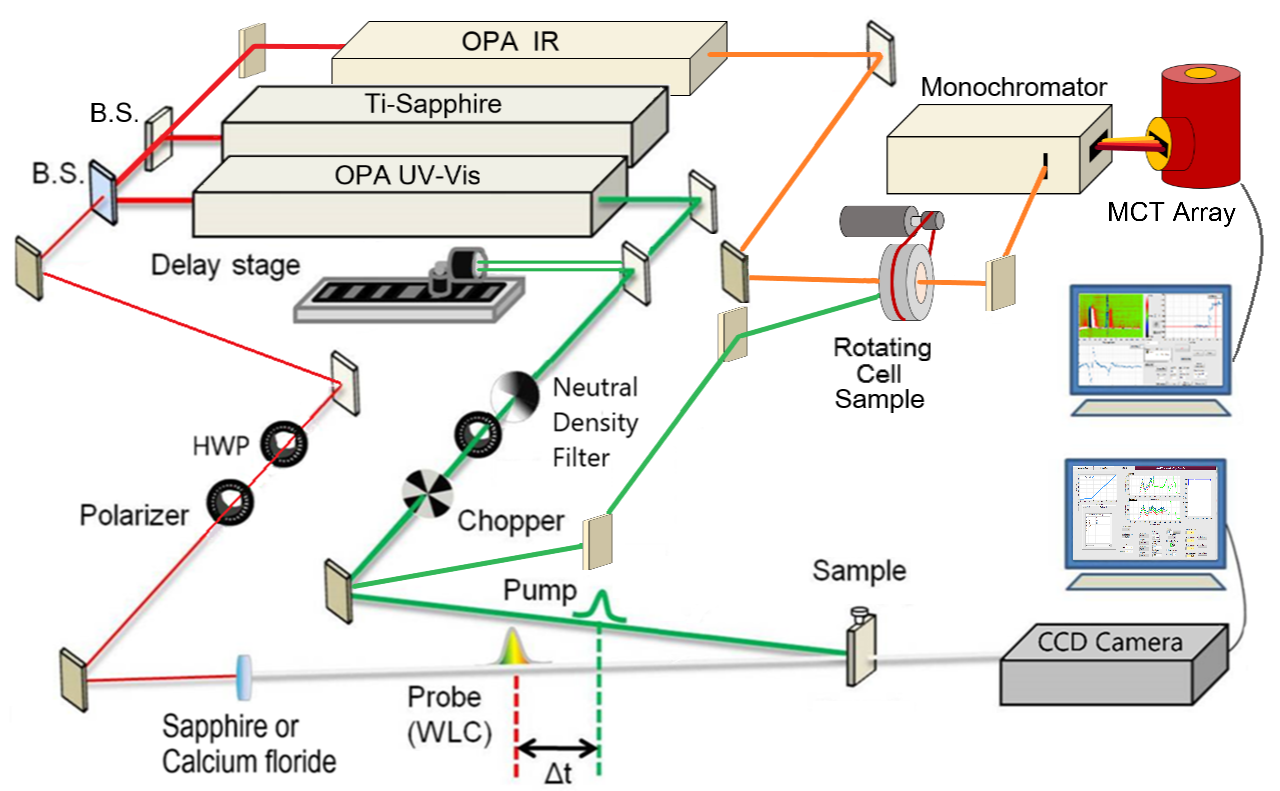-
Transient absorption pump-probe spectroscopy (TA) in the Glusac lab is accomplished using the setup depicted in the diagram below. This setup is actually two instruments in one, with the first providing capabilities in the visible and ultraviolet range (beam coupled to CCD camera in block diagram), and the second providing capabilities in the infrared region (beam coupled to MCT detector).

Every millisecond a pulse of 800 nm light that is 100 fs in duration is produced in the Ti:Sapphire laser and split into three paths. The first beam termed the “pump” is common to both instruments. It goes into an optical parametric amplifier (OPA) which converts the 800 nm light to a chosen color in the visible or near UV spectral region. This beam is reflected by a retroreflector attached to a linear stage, and every other beam is blocked using a chopper wheel before being focused into the sample. The chopper wheel effectively drops the repetition rate of the pump pulse from 1 kHz to 500 Hz.
The second and third beams are both termed “probe”, with one being for the UV-Vis side and the other for the IR side. The UV-Vis probe is attenuated using a half wave plate (HWP) and polarizing filter. It is then focused onto a crystal which converts the 800 nm light into a continuum of colors that span the visible and near ultraviolet region, which we term “white light”. The white light is focused into the sample and directed into a CCD camera which measures the intensity of each color simultaneously. The IR probe goes into an OPA which is tuned for the IR region. The beam is focused into the sample and then into a monochromator which splits the light into various IR colors before being sent into a mercury cadmium telluride (MCT) array IR detector. The pump and probe beams are made to overlap non-colinearly in space at the magic angle of 54.7 degrees, and the time delay between the two pulses is controlled by moving the linear delay stage causing the pump to take a longer or shorter path.
One absorption measurement is the difference between the ground state and excited state absorption, termed “difference spectrum”, and requires two separate spectra be collected. The ground state spectrum is collected when the pump is blocked by the chopper wheel, and only the probe hits the sample. The excited state spectrum is collected when the pump is not blocked by the chopper, and both the pump and probe beam hit the sample. The pump serves the function of sending some portion of molecules in the sample into their excited state. By taking measurements at various time delays between pump and probe, a temporal picture of the exited state can be generated giving valuable insight into the behavior of a compound.
